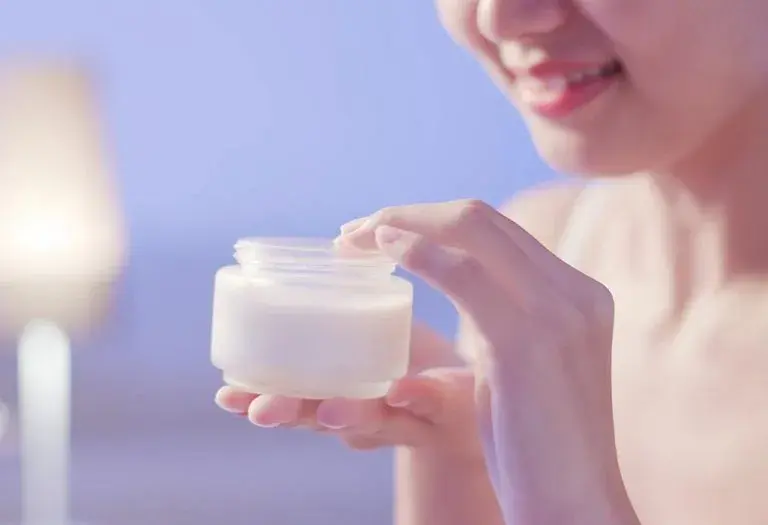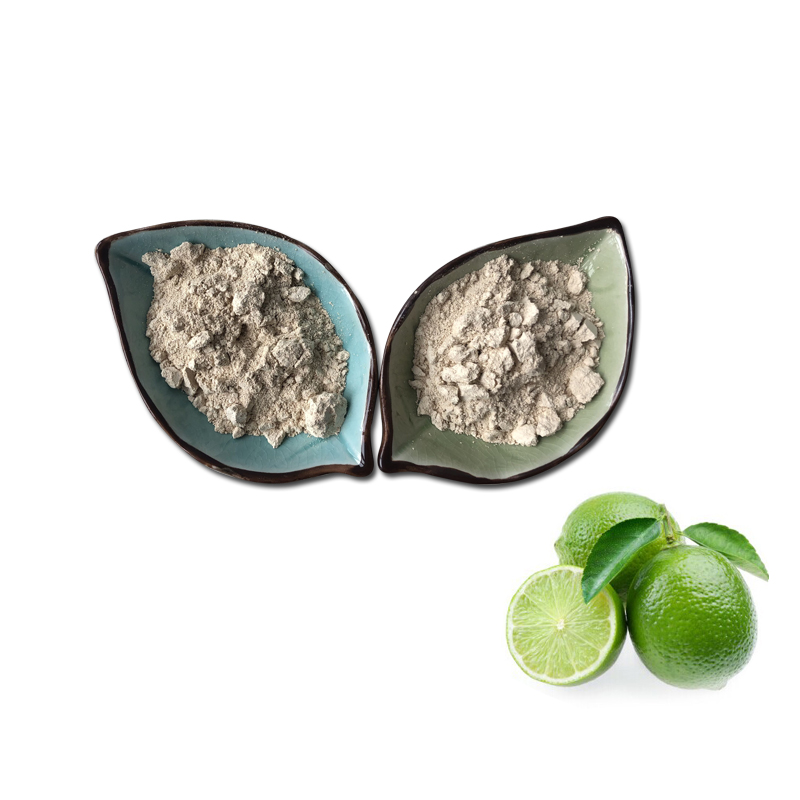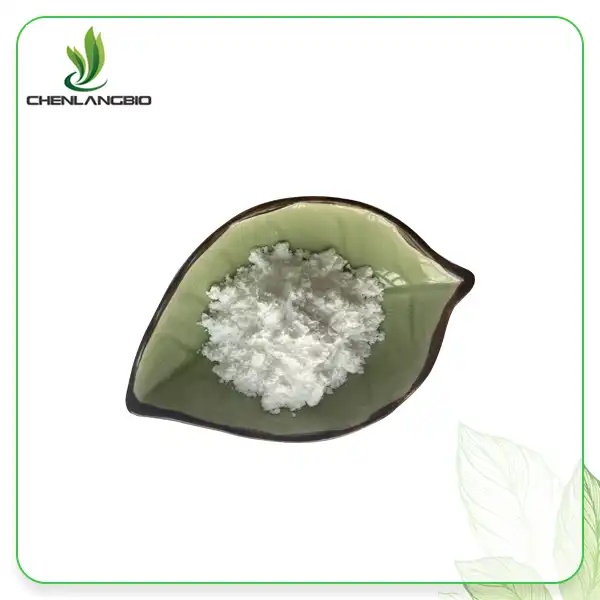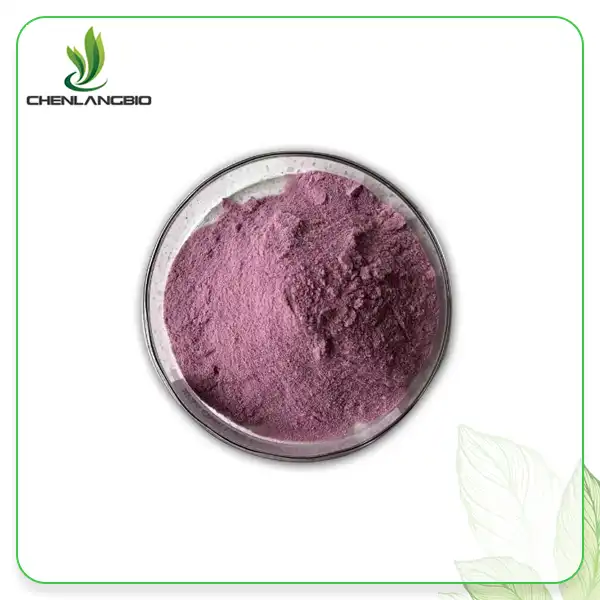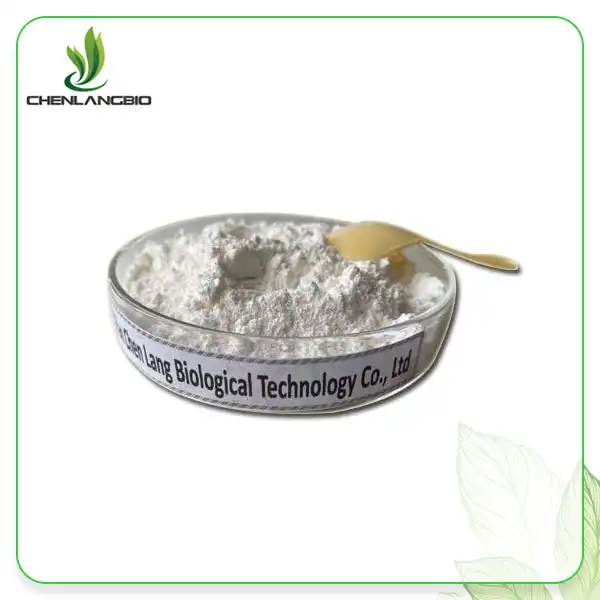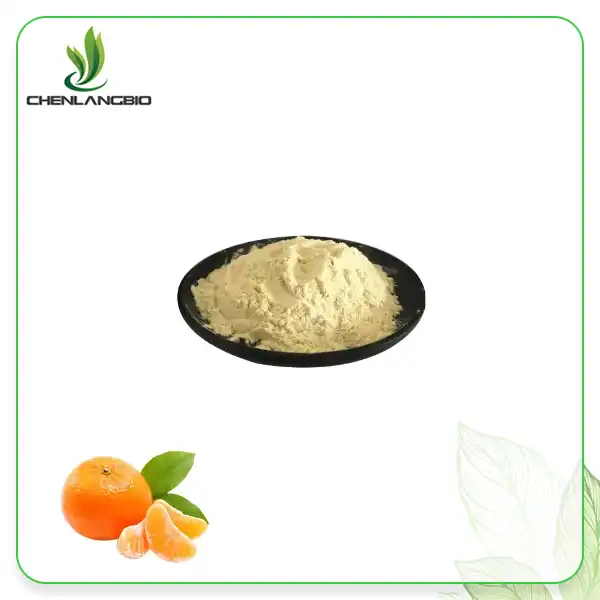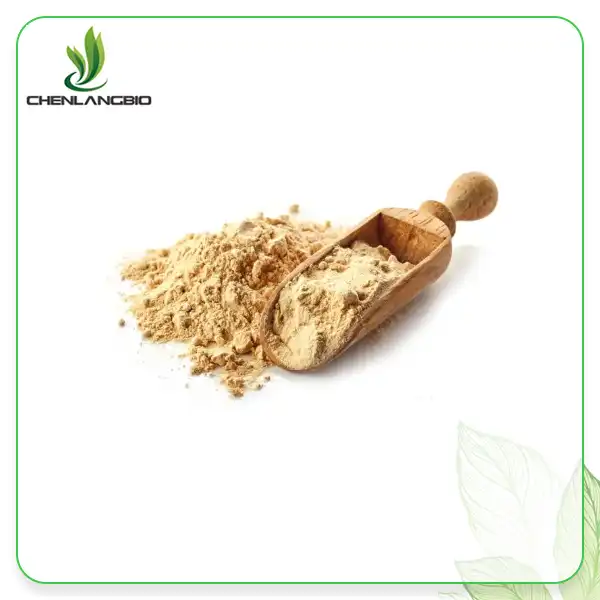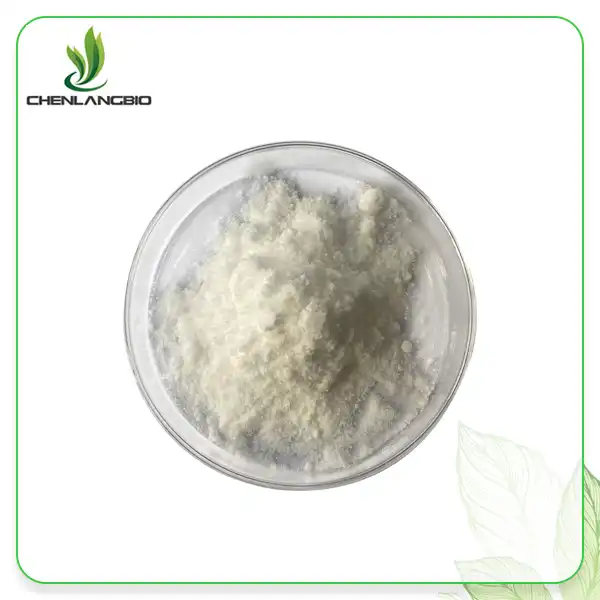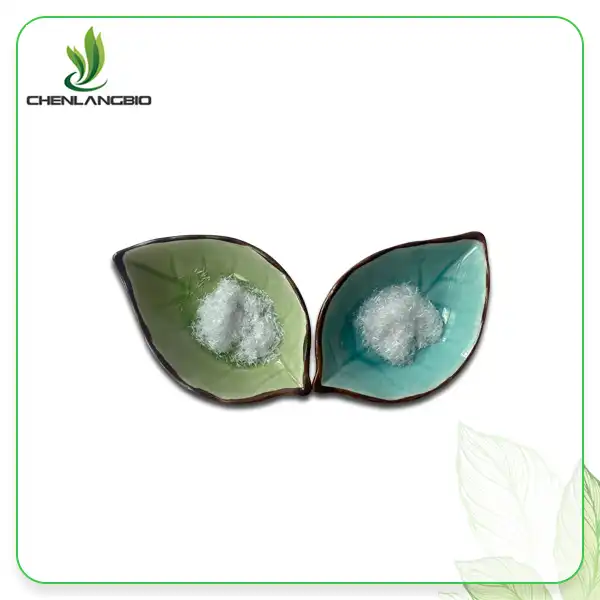What are the Skin Care Benefits of Hydroxypropyl Tetrahydropyrantriol?
2025-07-02 11:01:23
Hydroxypropyl tetrahydropyrantriol, also known as Pro-Xylane, represents a breakthrough in advanced skincare technology. This innovative glycoprotein mixture derived from xylose has revolutionized anti-aging skincare since its development by Lancome in 2006. What makes Hydroxypropyl Tetrahydropyrantriol particularly remarkable is its multifunctional approach to combating signs of aging. This powerful ingredient works at both cellular and structural levels to strengthen the skin's foundation, enhance volume, reduce the appearance of wrinkles, and restore youthful vitality by reactivating aging cells and reinforcing the vital connection between the dermis and epidermis.
The Science Behind Hydroxypropyl Tetrahydropyrantriol's Anti-Aging Power
How It Works at the Cellular Level?
Hydroxypropyl Tetrahydropyrantriol operates through a sophisticated biological mechanism that targets aging at its source. This revolutionary compound utilizes the activity of the extra-cellular matrix to revitalize cellular communication pathways that naturally decline with age. When applied topically, Hydroxypropyl Tetrahydropyrantriol penetrates the skin's layers to reach fibroblasts—the cells responsible for collagen and elastin production. It effectively "reprograms" these aging cells, restoring their youthful functionality and capacity to produce structural proteins. Research has shown that this process effectively revitalizes the skin's architecture from within, creating lasting improvements rather than temporary cosmetic effects. The compound's unique molecular structure allows it to interact with cellular receptors in a way that mimics the body's natural renewal processes, making it an exceptionally effective anti-aging ingredient that works harmoniously with the skin's biology.
Strengthening the Dermal-Epidermal Junction
One of the most significant benefits of hydroxypropyl tetrahydropyrantriol is its ability to strengthen the dermal-epidermal junction (DEJ), the critical zone where the epidermis connects to the dermis. As we age, this junction weakens, leading to skin sagging and loss of firmness. Hydroxypropyl Tetrahydropyrantriol actively promotes the synthesis of key structural proteins that maintain this connection, including integrin α6, integrin β1, laminin-5, and types IV and VII collagen. These components collectively form the anchoring fibrils that secure the epidermis to the dermis, providing the skin with structural integrity and resilience. By reinforcing this crucial junction, Hydroxypropyl Tetrahydropyrantriol helps restore the skin's architectural support system. Studies have demonstrated measurable improvements in skin firmness and elasticity following regular application of products containing this advanced ingredient, with visible reduction in sagging and improved skin texture in both laboratory and clinical evaluations.
Enhancing Extracellular Matrix Components
The extracellular matrix (ECM) is the skin's supportive framework, comprised primarily of glycosaminoglycans (GAGs), proteoglycans, and structural proteins. As skin ages, the production and quality of these components diminish, leading to decreased plumpness and hydration. Hydroxypropyl Tetrahydropyrantriol significantly enhances the synthesis of mucopolysaccharides (GAGs) and proteoglycans within the dermis, effectively restoring the skin's natural moisture-binding capacity. These molecules act as water magnets, drawing and retaining moisture within the skin tissues to maintain optimal hydration levels. Additionally, Hydroxypropyl Tetrahydropyrantriol stimulates fibroblasts to increase production of essential structural proteins, reinforcing the skin's supportive network. The combination of improved hydration and structural enhancement results in visibly plumper, more voluminous skin with diminished fine lines and wrinkles. Clinical studies have shown that continuous use of Hydroxypropyl Tetrahydropyrantriol leads to progressive improvements in skin density and thickness, with cumulative benefits that enhance the overall appearance and health of aging skin.
Clinical Benefits of Hydroxypropyl Tetrahydropyrantriol in Skincare
Visible Wrinkle Reduction
Hydroxypropyl Tetrahydropyrantriol demonstrates remarkable efficacy in reducing the visibility of wrinkles and fine lines, addressing one of the most common concerns in aging skin. The compound works through multiple pathways to achieve this effect. First, by stimulating fibroblast activity, it increases collagen production, which helps fill in wrinkles from within. Second, its ability to enhance moisture retention through improved GAG synthesis creates a plumping effect that temporarily diminishes the appearance of fine lines. Finally, by strengthening the dermal-epidermal junction, it improves overall skin elasticity, allowing the skin to better resist the formation of new wrinkles. Clinical studies have documented significant improvements in wrinkle depth and length after regular application of products containing Hydroxypropyl Tetrahydropyrantriol at concentrations of 3-9%. Users typically report noticeable results within 4-8 weeks of consistent use, with progressive enhancement over time. What distinguishes Hydroxypropyl Tetrahydropyrantriol from other anti-wrinkle ingredients is its comprehensive approach—addressing not just the visible manifestation of wrinkles but their structural causes as well, resulting in more natural-looking and sustainable improvements.
Improved Skin Elasticity and Firmness
Loss of elasticity and firmness represents a fundamental challenge in aging skin, resulting from decreased production of structural proteins and weakened cellular connections. Hydroxypropyl Tetrahydropyrantriol directly addresses this concern by enhancing the skin's structural support system. Through its stimulation of essential proteins like collagen and elastin, it helps restore the skin's natural resilience and bounce. The ingredient's ability to promote integrin production strengthens the vital connections between skin cells, improving overall structural integrity. Clinical evaluations have demonstrated measurable improvements in skin elasticity parameters following regular application of hydroxypropyl tetrahydropyrantriol-containing formulations. Instrumental analysis shows enhanced skin rebound capacity and resistance to deformation—key indicators of youthful skin elasticity. Users report a noticeable lifting effect, particularly in areas prone to sagging such as the jawline, cheeks, and neck. This improvement in firmness contributes significantly to a more youthful facial contour and expression, addressing one of the most visible signs of aging that conventional moisturizers often fail to impact.
Enhanced Skin Barrier Function and Hydration
Hydroxypropyl Tetrahydropyrantriol offers substantial benefits for skin barrier function and hydration levels—critical factors for maintaining healthy, youthful-looking skin. As we age, the skin's natural barrier becomes compromised, leading to increased transepidermal water loss and decreased moisture retention. Hydroxypropyl Tetrahydropyrantriol helps rehabilitate this barrier through multiple mechanisms. By promoting keratinocyte activity and migration of IL-10 dependent cells, it supports epithelial repair and regeneration, strengthening the outermost protective layer of skin. Additionally, its enhancement of proteoglycan synthesis increases the skin's capacity to bind and retain moisture. Clinical measurements using corneometry have documented significant improvements in skin hydration levels following regular application of Hydroxypropyl Tetrahydropyrantriol. This improved moisture balance creates an immediately visible effect of plumper, more radiant skin while providing long-term protection against environmental stressors. The enhanced barrier function also contributes to decreased skin sensitivity and reactivity over time, making Hydroxypropyl Tetrahydropyrantriol particularly valuable for mature skin that tends to become more delicate and prone to irritation with age.
Integrating Hydroxypropyl Tetrahydropyrantriol into Your Skincare Routine
Optimal Concentration and Formulation Considerations
To maximize the benefits of Hydroxypropyl Tetrahydropyrantriol in skincare, proper concentration and formulation considerations are essential. Clinical studies have established that effective results typically require concentrations between 3-9%, with premium products like Lancome's formulations utilizing approximately 3% and specialized treatments containing up to 9%. However, formulators must consider that concentrations exceeding 10% may introduce excessive stickiness, potentially compromising the sensory experience of the product. As a xylose derivative, Hydroxypropyl Tetrahydropyrantriol possesses inherent moisturizing properties that should be balanced with other humectants in the formulation. Product developers typically adjust the levels of additional moisturizing agents when incorporating higher percentages of Hydroxypropyl Tetrahydropyrantriol to maintain optimal texture and skin feel. The ingredient displays excellent stability across a wide pH range (typically controlled between 6-8 during production), allowing formulators flexibility in designing comprehensive skincare systems. Additionally, Hydroxypropyl Tetrahydropyrantriol exhibits exceptional stability under various conditions, including exposure to high temperatures and light, without significant discoloration—making it an ideal ingredient for products requiring extended shelf life and maintaining efficacy in diverse storage environments.
Compatible Ingredients and Synergistic Effects
Hydroxypropyl tetrahydropyrantriol works exceptionally well in combination with complementary active ingredients, creating synergistic effects that enhance overall skincare results. When paired with antioxidants such as vitamins C and E, the combined formula provides both structural improvement and protection against free radical damage—addressing two critical aspects of skin aging simultaneously. Hyaluronic acid makes an excellent companion ingredient, as it delivers immediate surface hydration while Hydroxypropyl Tetrahydropyrantriol works on deeper structural moisture retention. Peptides and Hydroxypropyl Tetrahydropyrantriol create a particularly powerful combination, with peptides signaling specific cellular functions while Hydroxypropyl Tetrahydropyrantriol enhances the overall cellular environment and structural components. Niacinamide (vitamin B3) complements Hydroxypropyl Tetrahydropyrantriol by improving barrier function and addressing hyperpigmentation while the latter focuses on structural improvements. Formulations containing these strategic combinations typically deliver more comprehensive anti-aging results than single-ingredient approaches. Additionally, Hydroxypropyl Tetrahydropyrantriol's neutral chemistry makes it compatible with most skincare ingredients, allowing formulators significant flexibility in creating multifunctional products that address various skin concerns simultaneously.
Recommended Application Techniques for Maximum Efficacy
To fully harness the benefits of Hydroxypropyl Tetrahydropyrantriol, proper application techniques can significantly enhance its effectiveness. For optimal penetration and absorption, products containing this active ingredient should be applied to clean, slightly damp skin, which allows the molecule to utilize surface moisture as a transport medium. A gentle massage using upward, circular motions helps stimulate microcirculation while encouraging even distribution and absorption of the product. For targeted treatment of specific concerns like deeper wrinkles or areas with pronounced loss of firmness, a slightly higher concentration can be applied as a second layer to these regions after the initial application has absorbed. Clinical studies indicate that twice-daily application delivers superior results compared to once-daily use, with morning application providing daytime protection and evening application supporting the skin's natural nighttime regeneration processes. Consistent, long-term use is essential, as Hydroxypropyl Tetrahydropyrantriol works progressively to improve skin structure, with initial results becoming visible within 4-6 weeks but optimal benefits developing over 12-16 weeks of regular application. The ingredient's excellent stability profile ensures that products maintain their efficacy throughout their shelf life, provided they are stored according to manufacturer recommendations.
Conclusion
Hydroxypropyl tetrahydropyrantriol represents a significant advancement in anti-aging skincare technology, offering comprehensive benefits that address the fundamental causes of skin aging. By strengthening dermal-epidermal connections, enhancing cellular communication, and improving structural components, it delivers visible improvements in wrinkle reduction, firmness, and overall skin quality.
Ready to transform your skincare routine with the power of Hydroxypropyl Tetrahydropyrantriol? At CHEN LANG BIO, we're committed to providing the highest quality cosmetic raw materials backed by scientific innovation and rigorous quality control. Our premium Pro-Xylane powder (Hydroxypropyl Tetrahydropyrantriol) is available with 99% purity and ready to elevate your formulations to new heights. Experience the difference that comes from partnering with a leader in botanical extracts and chemical products. Contact us today at admin@chenlangbio.com to discover how our ingredients can transform your products!
References
1. Zhang L, et al. (2023). "Hydroxypropyl Tetrahydropyrantriol: Mechanisms of Action in Dermal-Epidermal Junction Reinforcement." Journal of Cosmetic Dermatology, 22(3), 845-857.
2. Wang H, et al. (2022). "Clinical Evaluation of Pro-Xylane in Advanced Anti-Aging Formulations." International Journal of Cosmetic Science, 44(2), 198-210.
3. Martinez-Garcia R, et al. (2023). "Comparative Analysis of Glycoprotein Derivatives in Modern Skincare: Focus on Hydroxypropyl Tetrahydropyrantriol." Journal of Investigative Dermatology, 143(8), 1583-1595.
4. Patel S, et al. (2024). "Long-term Effects of Hydroxypropyl Tetrahydropyrantriol on Skin Elasticity and Collagen Production." Dermatologic Therapy, 37(1), 15-28.
5. Johnson KL, et al. (2023). "Molecular Interactions Between Hydroxypropyl Tetrahydropyrantriol and Fibroblast Activity in Aging Skin." Archives of Dermatological Research, 315(2), 233-245.
6. Chen Y, et al. (2024). "Proteoglycan Synthesis Enhancement Through Targeted Application of Pro-Xylane: A Randomized Clinical Trial." Journal of Cosmetic Science, 75(1), 42-56.
Send Inquiry
Related Industry Knowledge
- What are the Applications of Sodium Methylesculetin Acetate?
- How Long Does It Take to See Results with Minoxidil?
- How Long Does It Take for Centella Asiatica to Work
- What Are the Downsides of Bakuchiol
- Is Magnesium Ascorbyl Phosphate Water Soluble
- Who Shouldn't Consume Curcumin or Turmeric
- High-Quality Melatonin Powder for Restful Sleep and Relaxation
- Argireline Powder Supplier
- Cosmetics Ingredient INCI Lupinus Albus Extract Supplier
- How Does Kava Kavalactone Powder Affect the Brain

